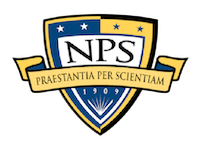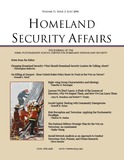Enablers of Self-Synchronization for Network-Centric Operations: Design of a Complex Command and Control Experiment
Author
Hutchins, Susan G.
Kleinman, David L.
Hocevar, Susan P.
Kemple, William G.
Porter, Gary R.
Date
2001-06Metadata
Show full item recordAbstract
Modified human decision-making processes are required—in addition to new
tactics and technology that are also currently under development—to enable Joint
military forces to operate in a time span that is shorter than an adversary’s. Selfsynchronization
is viewed as an essential process within military organizations
that can increase speed of command and thus accelerate execution of the mission.
This process of self-synchronization is described as the ability of a well-informed
force to organize and synchronize complex warfare activities from the bottom up.
The organizing principles are unity of effort, clearly articulated commander’s
intent, and carefully crafted rules of engagement. Self-synchronization is viewed
as a mechanism to overcome the loss of combat power inherent in top-down,
command-directed coordination that is characteristic of conventional command
and control doctrine. The planning that took place to prepare for a complex,
command and control, team-in-the-loop experiment, examining selfsynchronization,
is the focus for this paper. The objective of the experiment was
to determine the conditions under which self-synchronization can most effectively
be achieved. In particular, we discuss the activities that led to formulating the
hypotheses for the the experiment, and the efforts that were needed to actually run
the experiment. These efforts included conducting a pre-experiment seminar
game, crafting the scenario, experimental design development, independent
variable manipulation, data collection methods and instruments, and simulator
software modification. Some initial results and lessons learned will also be
discussed.
Rights
This publication is a work of the U.S. Government as defined in Title 17, United States Code, Section 101. Copyright protection is not available for this work in the United States.Collections
Related items
Showing items related by title, author, creator and subject.
-
N2C2M2 experimentation and validation: understanding its C2 approaches and implications
Manso, Barbara; Manso, Marco (2010-06);The recently developed NATO NEC Command and Control Maturity Model (N2C2M2) defined new C2 approaches, established their relation with one or more maturity levels and studied the implications throughout the NCW value chain, ... -
Homeland Security Affairs Journal, Volume II - 2006: Issue 2, July
Naval Postgraduate School Center for Homeland Defense and Security (CHDS) (Monterey, California. Naval Postgraduate SchoolCenter for Homeland Defense and Security, 2006-07);July 2006. The July 2006 issue of Homeland Security Affairs offers articles about risk perception, domestic right wing extremist groups, social network analysis, and the impact of foreign policy on homeland security. It ... -
Self-synchronization examined as a critical aspect of time-critical strike
Unknown author (Monterey, California. Naval Postgraduate School, 2001-03);Naval Postgraduate School, in partnership with OPNAV, SAIC, and Aptima, recently hosted Concept Development Game 1 (CDG 1) in support of OPNAV N6’s Advanced Command and Control (AC2) Study. The objective of the AC2 study ...



 9fcfd50932624a038e_2001-06.pdf (91.70Kb)
9fcfd50932624a038e_2001-06.pdf (91.70Kb)

